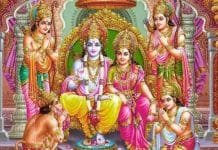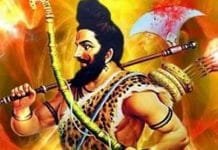
INVC NEWS
Mumbai : On 17 September, the birth anniversary of Lord Vishwakarma is celebrated with great reverence and devotion across India. Known as the divine architect of the universe, Vishwakarma is credited with creating some of the most significant mythological structures in Hindu lore, ranging from Lord Krishna’s Dwarka to Lord Shiva’s Trishul and Hastinapur, the grand city of the Mahabharata. This day is not only a celebration of his birth but also an acknowledgment of the profound impact he has had on craftsmanship, engineering, and architecture, which continues to influence the world today.
The Significance of Vishwakarma Jayanti
Vishwakarma Jayanti holds a unique place in the Hindu calendar as it is a day dedicated to the worship of tools, machines, and craftsmanship. It is observed primarily by professionals in various industries such as engineering, architecture, artisanship, and mechanical work. Factories, workshops, and offices across the country witness a ritualistic worship of machinery and tools, which are considered extensions of Lord Vishwakarma’s divine creations. The day is also marked by the hope of gaining prosperity, success, and protection from malfunctions in their daily work.
The Legend of Lord Vishwakarma
According to Hindu mythology, Lord Vishwakarma is the seventh son of Lord Brahma, the creator of the universe. Vishwakarma is hailed as the first architect, craftsman, and engineer of the cosmos. Entrusted with the divine task of shaping and beautifying the universe, his creations are celebrated for their grandeur, precision, and unmatched craftsmanship.
Among his most notable creations is Dwarka, the golden city of Lord Krishna, which is said to have been submerged in the sea after Krishna’s departure from Earth. Another masterpiece is Hastinapur, the capital city of the Kauravas and Pandavas, renowned for its strategic design and architectural splendor. Vishwakarma is also credited with crafting the powerful Trishul of Lord Shiva, a weapon of immense significance and power.
Rituals and Celebrations on Vishwakarma Jayanti
On Vishwakarma Jayanti, rituals begin early in the morning. People clean their workplaces, tools, and machines meticulously, preparing them for the special puja. The ritualistic offerings typically include flowers, fruits, sweets, and incense, symbolizing devotion and gratitude towards Lord Vishwakarma. The puja is conducted with the belief that it will bring prosperity, efficiency, and smooth functioning in the professional domain.
In many regions, particularly in the industrial belts of India, Vishwakarma Jayanti is marked by community feasts, cultural programs, and distribution of prasad (holy offerings). Workers take a day off from their regular duties to participate in the celebrations, which also fosters a sense of unity and shared purpose among colleagues and community members.
The Importance of Worshiping Tools and Machines
The tradition of worshiping tools and machines on Vishwakarma Jayanti is deeply rooted in the acknowledgment of the divine in every aspect of creation. By performing the puja, people express their respect for the tools that enable their livelihood and acknowledge their dependence on these tools for their prosperity. This act is also a form of seeking blessings to avoid any breakdowns or malfunctions in the machines, which can significantly impact their work.
Furthermore, the ritual underscores the principle that all work, when done with dedication and respect, is a form of worship. Whether it is a simple tool or a complex machine, every instrument is seen as an embodiment of Vishwakarma’s genius and is thus treated with reverence.
The Connection Between Vishwakarma and Modern Professions
While Vishwakarma is traditionally associated with the construction of mythological structures, his relevance extends to modern professions as well. Engineers, architects, craftsmen, and designers often invoke Vishwakarma’s blessings to enhance their skills and achieve perfection in their work. His legacy serves as a reminder that the principles of precision, creativity, and dedication are timeless and applicable across all eras and professions.
In the context of today’s world, where technology and innovation play a crucial role in shaping industries, Vishwakarma Jayanti serves as a day to reflect on the importance of ethical practices, sustainable development, and the responsible use of technology. Just as Vishwakarma’s creations were aligned with cosmic balance and divine order, modern professionals are encouraged to pursue their work with a sense of responsibility towards society and the environment.
Vishwakarma’s Role in Hindu Scriptures
Vishwakarma’s contributions are extensively documented in Hindu scriptures such as the Rigveda, Ramayana, and Mahabharata. These texts describe him not only as a skilled craftsman but also as a symbol of the divine order, where every creation has a purpose and a place in the universe.
In the Rigveda, Vishwakarma is described as the Lord of the Arts, Executor of a thousand handicrafts, the carpenter of the gods, and the fabricator of all ornaments. His attributes reflect the multifaceted nature of creativity, encompassing both the tangible and the intangible aspects of creation.
In the Ramayana, Vishwakarma is credited with designing the Pushpaka Vimana, a flying chariot used by Lord Rama, while in the Mahabharata, he is the creator of the magnificent Maya Sabha, a grand palace of illusions built for the Pandavas.
The Influence of Vishwakarma on Indian Culture
The influence of Vishwakarma extends beyond religious rituals and mythological tales. His legacy has permeated Indian culture in various forms, from traditional crafts to modern engineering marvels. Indian artisans, known for their intricate work in fields like carpentry, metalwork, and jewelry making, often trace their lineage to Vishwakarma, considering him their divine ancestor and inspiration.
In modern times, Vishwakarma Jayanti has also become an occasion for recognizing and celebrating the contributions of skilled laborers, technicians, and engineers, who are the backbone of industrial and economic development. This day serves as a reminder of the value of skilled labor and the importance of investing in craftsmanship and technical education.
Conclusion: The Everlasting Legacy of Lord Vishwakarma
Vishwakarma Jayanti is not just a day of ritualistic worship; it is a celebration of the spirit of creativity, innovation, and craftsmanship. Lord Vishwakarma’s contributions to the universe, as depicted in Hindu mythology, continue to inspire millions of professionals across various fields today.
As we celebrate this auspicious day, let us remember the values that Vishwakarma embodies—precision, dedication, and the pursuit of excellence. By honoring these principles, we not only pay homage to the divine architect but also contribute to the betterment of our own lives and the world around us.
May the blessings of Lord Vishwakarma bring prosperity, success, and fulfillment in all our endeavors, today and always.











